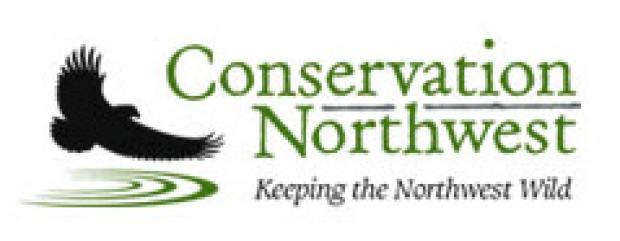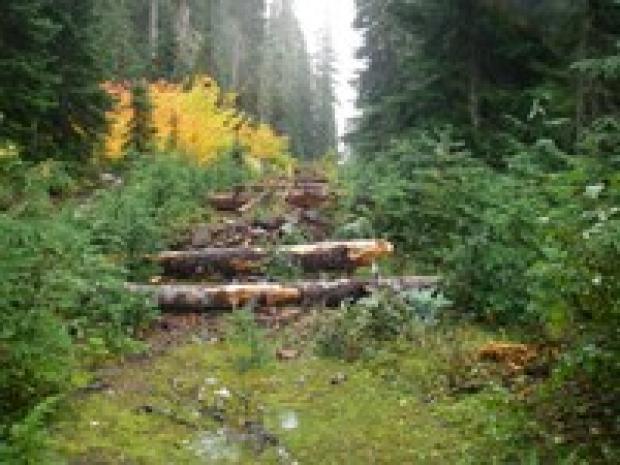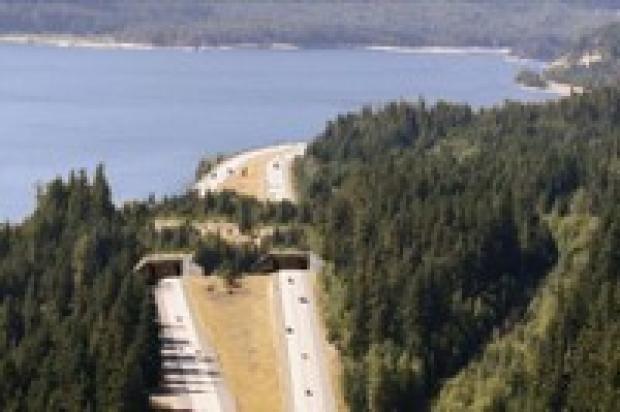
The landscape around Snoqualmie Pass in Washington connects the Alpine Lakes Wilderness to the north with Mount Rainier National Park and Norse Peak Wilderness to the south. The Pass is bordered by the cities of North Bend to the west and Cle Elum to the east. We call it the I-90 wildlife corridor.
This landscape is the critical connective link between the North and South Cascades. If the North Cascades were your bedroom and the south Cascades your kitchen, the I-90 wildlife corridor is the hallway. Preserving the progress made through decades of effort to protect the wildness of Washington’s North and South Cascades depend on our ability to keep them connected, and for more than ten years Conservation Northwest has been working to do just that.

This project serves both to help wildlife adapt to a changing climate and also helps to increase the forest’s capacity to absorb and store carbon; a biocarbon solution to climate change. Maintaining connected landscapes is vital to helping wildlife adapt to a changing climate, while the restorative actions we take within this landscape to maintain connectivity also increase the carbon storage capacity of the land. Our biocarbon-enhancing activities include removing and revegetating miles of old logging roads, building vegetated wildlife overpasses, and restoring healthy soils, floodplain, and forest functioning in areas that need it.
The I-90 corridor is a conservation success story that is being written daily with lead characters ranging from non-profit leaders and private donors to field contractors and people who care to four-legged critters.
From 2000 to 2004, we worked with over 40 partner organizations in a historic campaign to protect more than 45,000 acres of habitat in the I-90 corridor. The Cascades Conservation Partnership raised $80 million in private and public dollars to purchase and protect 12,000 acres of unroaded lands, 9,000 acres of late-successional forest, 16 miles of river, 11 lakes, and 26 miles of trail.
Following the campaign, we continue to support partner organizations that protect remaining private land while we’ve turned our attention to two priorities for this landscape: 1) Reducing the barrier effect of Interstate 90; and 2) Restoring the habitat function.
Reduce the barrier effect of I-90

The six lanes of Interstate 90 itself are the largest physical barrier to wildlife trying to move north-south in the Cascades. We have successfully advocated through the I-90 Wildlife Bridges Coalition for high quality wildlife connectivity as part of a highway project to expand Interstate 90 from Hyak to Easton. At our urging, the final design includes 24 wildlife crossing structures over 15 miles including two wildlife bridges that will allow wildlife to safely move over the highway between habitats. There will be plantings of vegetation within and on the wildlife crossing structures. As you drive over the pass you can see the highway changing.
Habitat Restoration
Many of the lands acquired into the public domain through the Cascades Conservation Partnership had been heavily logged. This left us thousands of acres with excess logging roads, invasive species, and monoculture plantations. Management of these lands was donated to the US Forest Service as part of the campaign. These new lands add to the Forest Service’s existing restoration needs. The creativity and vision that went into protecting these places from development now needs to be applied to restoring them.
Priority restoration for these lands not only increase watershed health and wildlife habitat, but the carbon storage capacity of this landscape. Through partnerships we are working to further restoration on the ground that reduces road mileage, increases soil health, increases native vegetation, promotes larger tree growth, and restores floodplain function.
For more information visit the Conservation Northwest website.
Give for a brighter future
Connect
Join our email list to learn about what we do and how to get involved.